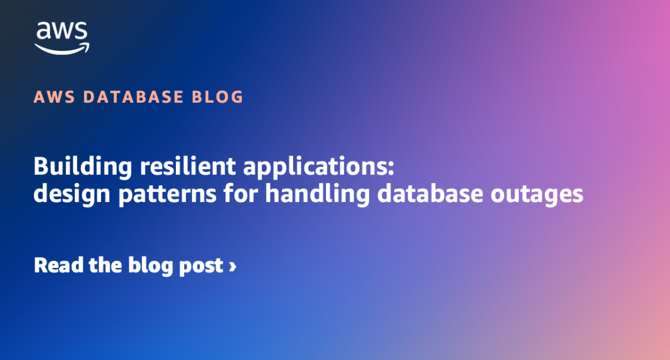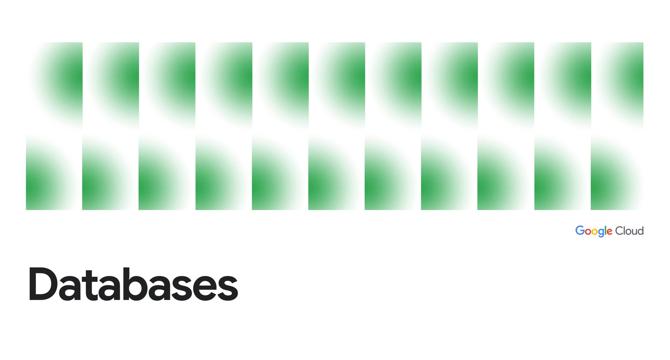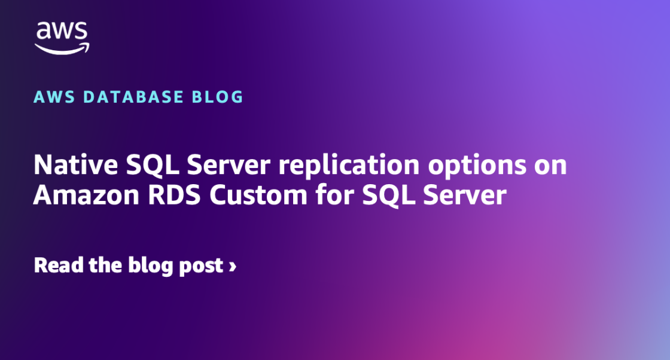Databases
Analyticsindiamag
424

Image Credit: Analyticsindiamag
xAI Brings Grok Models to Oracle Cloud Infrastructure
- xAI's Grok models are now available on Oracle Cloud Infrastructure (OCI) for tasks like content generation and business process automation.
- xDAI chose Oracle to support the training and deployment of Grok models, including Grok 3, benefiting from OCI's scalability and performance.
- Grok 3 is described as a major advancement in AI capabilities, aiming to redefine enterprise-grade AI through the collaboration with Oracle.
- Grok models will run on OCI Compute instances, leveraging the platform's price-performance, scalability, and zero data retention endpoints.
- Oracle aims to expand AI possibilities for customers by bringing xAI's Grok models to enterprises, offering advanced AI solutions with flexibility.
- xAI, founded in March 2023, focuses on building advanced reasoning AI systems, with Grok 3 trained using reinforcement learning for various tasks.
- Windstream, a telecommunications provider, is exploring the use of xAI's multimodal models via OCI for AI benefits in their business operations.
- Oracle's infrastructure supports various AI capabilities like generative AI, agentic AI, natural language processing, and computer vision.
- Thousands of AI companies are utilizing OCI's bare metal GPU instances for running intensive AI workloads, amplifying AI development.
Read Full Article
25 Likes
Oracle-Base
268

APEX 24.2.6 : Have you seen this error when applying Patch Set Bundle 6?
- Patch Set Bundle 6 for APEX 24.2 was released recently.
- Some users have experienced slow validation during the upgrade process.
- Not all installations are affected by this issue.
- Issue noticed when applying Patch Set Bundle 6.
- The error seems to occur during the "Validating APEX" stage.
- Post titled 'APEX 24.2.6: Have you seen this error when applying Patch Set Bundle 6?' published by The ORACLE-BASE Blog.
- Post published on June 18, 2025, at 9:28 am.
- Copyright notice for personal non-commercial use only.
- Contact email: [email protected]
Read Full Article
16 Likes
Amazon
177

Image Credit: Amazon
Building resilient applications: design patterns for handling database outages
- Database outages, whether planned or unexpected, are common challenges for applications, necessitating resilient design patterns for smooth operation.
- Design patterns such as Queue-based load leveling help in handling database outages by introducing a message queue to manage database operations.
- The Cache-aside pattern improves database resilience and application performance by utilizing a cache for accessing data.
- Command Query Responsibility Segregation (CQRS) treats read and write operations separately to enhance database resilience during failures.
- The Circuit breaker pattern acts as a safety switch to prevent cascading failures during database outages.
- The Retry with backoff pattern introduces smart retry logic for transient issues, gradually increasing delays between attempts to avoid overwhelming the system.
- The Bulkhead pattern isolates application resources into separate pools to prevent failures in one area from affecting the entire application.
- Combining these design patterns, like CQRS, Queue-based load leveling, Cache-aside, and Retry with backoff, can enhance application resilience.
- Implementations of these patterns using AWS services like Amazon SQS, ElastiCache, Aurora, and others help in improving system robustness.
- The authors suggest reviewing the AWS Well-Architected Framework's Reliability Pillar for detailed best practices on building reliable systems.
Read Full Article
10 Likes
VoltDB
316

Image Credit: VoltDB
The 6 Reasons BFSI Companies Need Real-Time Data Processing
- Real-time decisioning is crucial for fintech apps to enhance the user experience by providing instant responses to user actions like approving loans or detecting fraud.
- It helps in reducing fraud and enhancing security by analyzing transactions as they occur to identify suspicious activities and take immediate action.
- Real-time data analysis allows for personalization and customization of services based on individual user needs, improving user engagement and loyalty.
- Streamlining operations, improving operational efficiency, and ensuring regulatory compliance are also key benefits of real-time decisioning for BFSI companies.
- Real-time decisioning systems enable scalability for fintech companies as they grow, handling large volumes of data and transactions efficiently.
- In conclusion, real-time decisioning is essential for fintech apps to thrive in a competitive market, driving innovation and shaping the future of finance.
Read Full Article
19 Likes
Discover more
- Programming News
- Software News
- Web Design
- Devops News
- Open Source News
- Cloud News
- Product Management News
- Operating Systems News
- Agile Methodology News
- Computer Engineering
- Startup News
- Cryptocurrency News
- Technology News
- Blockchain News
- Data Science News
- AR News
- Apple News
- Cyber Security News
- Leadership News
- Gaming News
- Automobiles News
Dev
21

Image Credit: Dev
Some Tips on SQL Usage in Spring
- 1. A Left Join followed by an Inner Join behaves like a regular Inner Join.
- 2. Avoid using groupBy/associateBy in the app layer when pagination is applied to ensure consistency.
- 3. Understand the SQL Query Execution Order: FROM → JOIN → WHERE → GROUP BY → HAVING → SELECT → ORDER BY.
- 4. Adding AND conditions in LEFT JOIN ON does not affect row count.
- 5. For one-to-one relationships, use '@OneToOne' and enforce a UNIQUE KEY in the database.
- 6. '@Transactional' only guarantees atomicity in specific situations.
- 7. WHERE vs HAVING: WHERE filters rows before grouping, while HAVING filters after grouping.
- Consideration: Check and understand the actual SQL generated by JPA for better optimization.
Read Full Article
1 Like
Cloudblog
360

Image Credit: Cloudblog
Spanner's enduring impact: Celebrating the 2025 ACM SIGMOD Systems Award
- Spanner, Google's globally distributed database, was awarded the 2025 SIGMOD Systems Award by the ACM SIGMOD for its innovative contributions to large-scale data management.
- Spanner's core innovation includes TrueTime and external consistency, enabling serializability and external consistency at a global scale.
- TrueTime, with its bounded uncertainty, facilitates external consistency by providing a definitive commit timestamp based on synchronized global clock references.
- Spanner addressed the consistency-scale dilemma in databases by offering both ACID transactions with SQL and horizontal scalability of distributed systems.
- Recognized for empowering developers and simplifying distributed applications, Spanner's global consistency, scalability, and availability make it a valuable tool for various industries including finance, gaming, retail, and transportation.
- Spanner, a core component of Google's infrastructure, powers critical services like Google Ads, Gmail, YouTube, and Google Photos, demonstrating its robustness and scalability under extreme load.
- Spanner's unique capabilities, such as strong consistency, unmatched availability, simplified operations, and developer productivity, offer significant advantages over traditional databases and NoSQL systems.
- The article discusses Spanner's impact in various industries, showcasing its role in enabling real-time global inventory management, consistent financial records, and seamless worldwide multiplayer experiences.
- Despite academic recognition like the SIGMOD award, Spanner's true impact lies in empowering users to solve real-world problems and innovate across different sectors.
- The future with Spanner looks promising as Google continues to invest in enhancing distributed database technologies and expanding the possibilities for developers building next-gen applications.
- The article concludes with an invitation to explore Spanner's capabilities, learn about its use cases, and join the Google team at the 2025 SIGMOD conference to experience the Spanner difference.
Read Full Article
21 Likes
Medium
130

Image Credit: Medium
Writing Smarter SQL Queries with GPT-Powered Database Assistants
- GPT-powered database assistants are transforming SQL query writing by converting natural language into performance-tuned queries.
- These AI tools interpret human language prompts and transform them into SQL queries, bridging the gap between data and decision-making.
- AI SQL editors are being adopted across various verticals for enterprise app development, BI reporting, and cross-platform app development.
- Top uses of AI SQL editors include generating clean SQL queries from natural language prompts, auto-suggestions for query optimization, and creating reusable dashboard queries.
- GPT-based SQL development is not limited to developers and is transforming data handling for businesses.
- LLMs are evolving to integrate deeply into high-end databases, paving the way for AI-driven database performance tuning and query optimization.
- GPT-driven database assistants are enhancing productivity and performance for teams, providing cleaner SQL and compliance-conscious query automation.
- AI SQL assistants use natural language understanding and machine learning to create, optimize, and document SQL queries from human input.
- ChatGPT can produce SQL queries and provide comments or code debugging based on natural language input.
- GPT models can improve SQL queries by providing rewrites, flagging slow clauses, and recommending indexing plans for better performance.
- SQL queries generated by GPT are generally safe if run in sandbox environments or with proper access controls.
Read Full Article
7 Likes
Medium
610

Image Credit: Medium
The SQL WITH Clause: Your Secret Weapon for Readable, Efficient Queries
- CTEs are temporary named result sets created within an SQL statement.
- Analysts at companies like Amazon and Google utilize CTEs for readable and efficient queries.
- CTEs eliminate nesting in SQL queries, making them more readable and organized.
- The SQL WITH clause allows for creating CTEs to serve as query building blocks.
- Chain multiple CTEs with commas to build powerful data pipelines in SQL.
- Clean SQL positively impacts query readability and efficiency.
- CTEs can handle hierarchical data such as org charts, making them versatile for various data structures.
Read Full Article
12 Likes
Amazon
178

Image Credit: Amazon
Native SQL Server replication options on Amazon RDS Custom for SQL Server
- SQL Server replication helps in distributing data between databases in near real-time, supporting modern applications' data distribution requirements.
- Amazon RDS Custom for SQL Server offers the flexibility of self-managed databases with managed services automation.
- RDS Custom enables the use of native SQL Server replication features with reduced operational overhead.
- Different replication types supported on RDS Custom include transactional, snapshot, peer-to-peer, and merge replication.
- A step-by-step guide is provided for setting up transactional replication on Amazon RDS Custom for SQL Server.
- Prerequisites for configuring transactional replication include having two RDS Custom instances and proper network configuration.
- Best practices for optimization include monitoring replication latency and choosing the right replication topology.
- The article covers steps for generating test data, validating replication, and considerations for replication setup.
- Cleanup steps are also outlined to remove the replication setup and associated resources to avoid incurring costs.
- The implementation of native SQL Server replication on Amazon RDS Custom simplifies data consistency maintenance across distributed environments.
Read Full Article
10 Likes
Amazon
426

Image Credit: Amazon
Implement row-level security in Amazon Aurora MySQL and Amazon RDS for MySQL
- Row-level security (RLS) enhances data protection by controlling access at the individual row level for scalable applications.
- It enables fine-grained access controls based on user attributes to restrict data access.
- RLS is relevant across various sectors like healthcare, HR, finance, and education to enforce regulatory compliance and data privacy.
- The solution demonstrates implementing a custom RLS using native MySQL features for Amazon Aurora and RDS for MySQL.
- It involves adding an ownership column, utilizing views, stored functions, and triggers for security enforcement.
- The setup ensures users can only interact with data they own, simplifying access management and improving security.
- Configuring permissions, creating triggers, and testing the solution are essential steps in the RLS implementation.
- Performance considerations like index optimization and query complexity are crucial when implementing RLS.
- The post concludes by encouraging readers to implement RLS for enhanced security and efficiency in database management.
- The authors are Database Specialist Technical Account Managers at Amazon Web Services with expertise in Amazon RDS and Aurora databases.
Read Full Article
25 Likes
Alvinashcraft
0

Dew Drop – June 16, 2025 (#4440)
- INotifyPodcastChanged Episode 5: Building features with Lance McCarthy (Joseph Finney & Tamás Deme)
- Best Practices for Handheld Gaming Development (Dean Hume)
- Build a Flutter Expense Tracker with Advanced Transaction Features (Naveen Kesavaraj)
- Controlling spacing in modern CSS layouts (Chris Ferdinandi)
- Announcing comprehensive sovereign solutions empowering European organizations (Judson Althoff)
- Visual Studio Code now supports Baseline (Rick Viscomi)
- Learn and Integrate: Azure and AI Web Development and Navigating the New AI Landscape: A Developer’s Journey Through the Noise (Konstantinos Passadis)
- The Month of MCP (Den Delimarsky)
- How to use Lotties in Figma (Andrei Marius)
- Apple Updates Developer Tools (Kay Ewbank)
Read Full Article
Like
Pymnts
187

Image Credit: Pymnts
CE 100 Slides 1.8% as Payments Names Dive
- CE 100 index finished 1.8% lower amidst volatile trading and Middle East conflict concerns.
- Inflation slowed in May despite negative market sentiment.
- Be Well sector rose 0.3%, led by Aetna CVS with over 10% gains.
- Oracle shares surged 23.7% on positive earnings, with strong revenue growth and cloud performance.
- Payment-focused names declined, with the Pay and Be Paid segment slipping by 2.9%.
- Worldpay expanded partnership with Visa for enhanced 3D Secure solution.
- Walmart's collaboration with Synchrony to launch a credit card program led to a 3% drop in Walmart's shares.
- Apple shares declined by 3.7%, and Amazon and Walmart are exploring stablecoin issuance.
- Nvidia CEO focusing on quantum computing as the next critical AI enabler.
- PayPal doubling down on AI and personalization strategy to stay competitive in the market.
- iRobot saw an 18.9% decline in the Live segment despite recent gains from a waiver extension.
- CE100 index reversed recent gains, with various sectors experiencing mixed performances.
- Visa shares dropped by 4.7% amidst market downturn.
- AI-powered Siri upgrade by Apple delayed for release in spring 2026.
- Nvidia CEO believes AI will create more jobs than it cuts, emphasizing productivity impact.
- PayPal utilizing AI and data-driven personalization for competitive advantage, with shares falling by 3.5%.
Read Full Article
11 Likes
Oracle-Base
100

Database Migration Assistant for Unicode (DMU). Was that the last time I will ever use it?
- The author reflects on whether their recent use of the Database Migration Assistant for Unicode (DMU) will be the last time they use it.
- The author typically creates new Oracle databases using the AL32UTF8 character set.
- The post was first published on The ORACLE-BASE Blog on June 16, 2025, at 8:16 am.
- Copyright © 2024 The ORACLE-BASE Blog. Personal non-commercial use of the feed is allowed.
- The author can be contacted at [email protected] for copyright infringement issues.
Read Full Article
6 Likes
Dev
270

Image Credit: Dev
From Redundancy to Reusability: A Better Way to Manage Shared Records in Relational Databases
- A system for tracking maintenance sessions required approvals from contractors.
- Initially, the database schema didn't support multiple sessions for a single approval, leading to duplicated records.
- The solution involved redesigning the schema to allow many-to-many relationships using a join table.
- This change enabled the reuse of a single approval across multiple sessions.
- A feature was added to the UI to search and select existing approvals, reducing redundancy and simplifying workflows.
- Benefits of this redesign include fewer records, simplified workflows, easier maintenance, and improved accuracy.
- The shift from tightly coupled to normalized design helps systems scale better, adapt to real-world scenarios, and facilitate future evolution.
Read Full Article
16 Likes
Dev
0

Image Credit: Dev
Solving One-to-Many Update Issues in Status Tracking Systems
- In a recent project, a status tracking system faced challenges with updating statuses for multiple entities tied to a parent event.
- The system recorded status changes at the parent level, impacting all related entities even if some were still active.
- The issue stemmed from the assumption that all associated items shared the same lifecycle, leading to inaccuracies.
- The solution involved moving status tracking to the relation level, allowing status updates per individual item.
- This change enhanced flexibility and accuracy in managing statuses.
- A simple data model adjustment resolved the one-to-many update issues in the status tracking system.
Read Full Article
Like
For uninterrupted reading, download the app